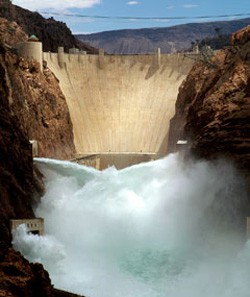
- Select a language for the TTS:
- UK English Female
- UK English Male
- US English Female
- US English Male
- Australian Female
- Australian Male
- Language selected: (auto detect) - EN
Play all audios:
Access through your institution Buy or subscribe _Proc. Natl Acad. Sci. USA_ doi:10.1073/pnas.0812762106 (2009) Tim Barnett and David Pierce of the Scripps Institution of Oceanography in San
Diego, California, assessed the ability of the Colorado River to meet the demand from scheduled future water deliveries under different climate change scenarios. The authors found that
under a conservative scenario of 10 per cent less runoff, expected water deliveries will fall short by 2040, and that with 20 per cent less runoff, water supplies will be inadequate to meet
demand by 2025. This is a preview of subscription content, access via your institution ACCESS OPTIONS Access through your institution Subscribe to this journal Receive 12 print issues and
online access $209.00 per year only $17.42 per issue Learn more Buy this article * Purchase on SpringerLink * Instant access to full article PDF Buy now Prices may be subject to local taxes
which are calculated during checkout ADDITIONAL ACCESS OPTIONS: * Log in * Learn about institutional subscriptions * Read our FAQs * Contact customer support Authors * Alicia Newton View
author publications You can also search for this author inPubMed Google Scholar RIGHTS AND PERMISSIONS Reprints and permissions ABOUT THIS ARTICLE CITE THIS ARTICLE Newton, A. High and dry.
_Nature Clim Change_ 1, 55 (2009). https://doi.org/10.1038/climate.2009.39 Download citation * Published: 30 April 2009 * Issue Date: May 2009 * DOI: https://doi.org/10.1038/climate.2009.39
SHARE THIS ARTICLE Anyone you share the following link with will be able to read this content: Get shareable link Sorry, a shareable link is not currently available for this article. Copy to
clipboard Provided by the Springer Nature SharedIt content-sharing initiative







:max_bytes(150000):strip_icc():focal(639x0:641x2)/jerry_pub-6a23f42abf3349bdbbdc6379784fd229.jpg)
